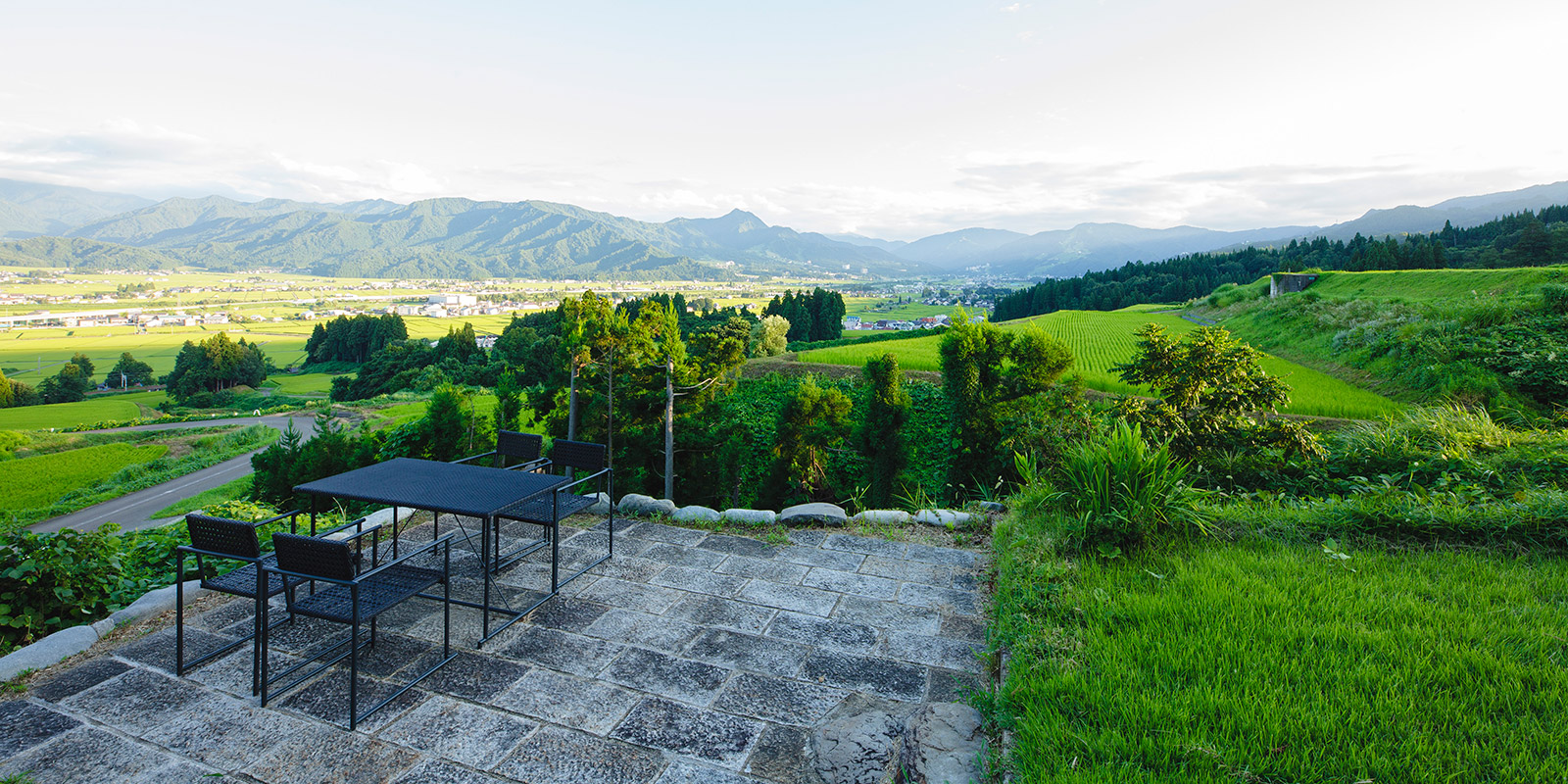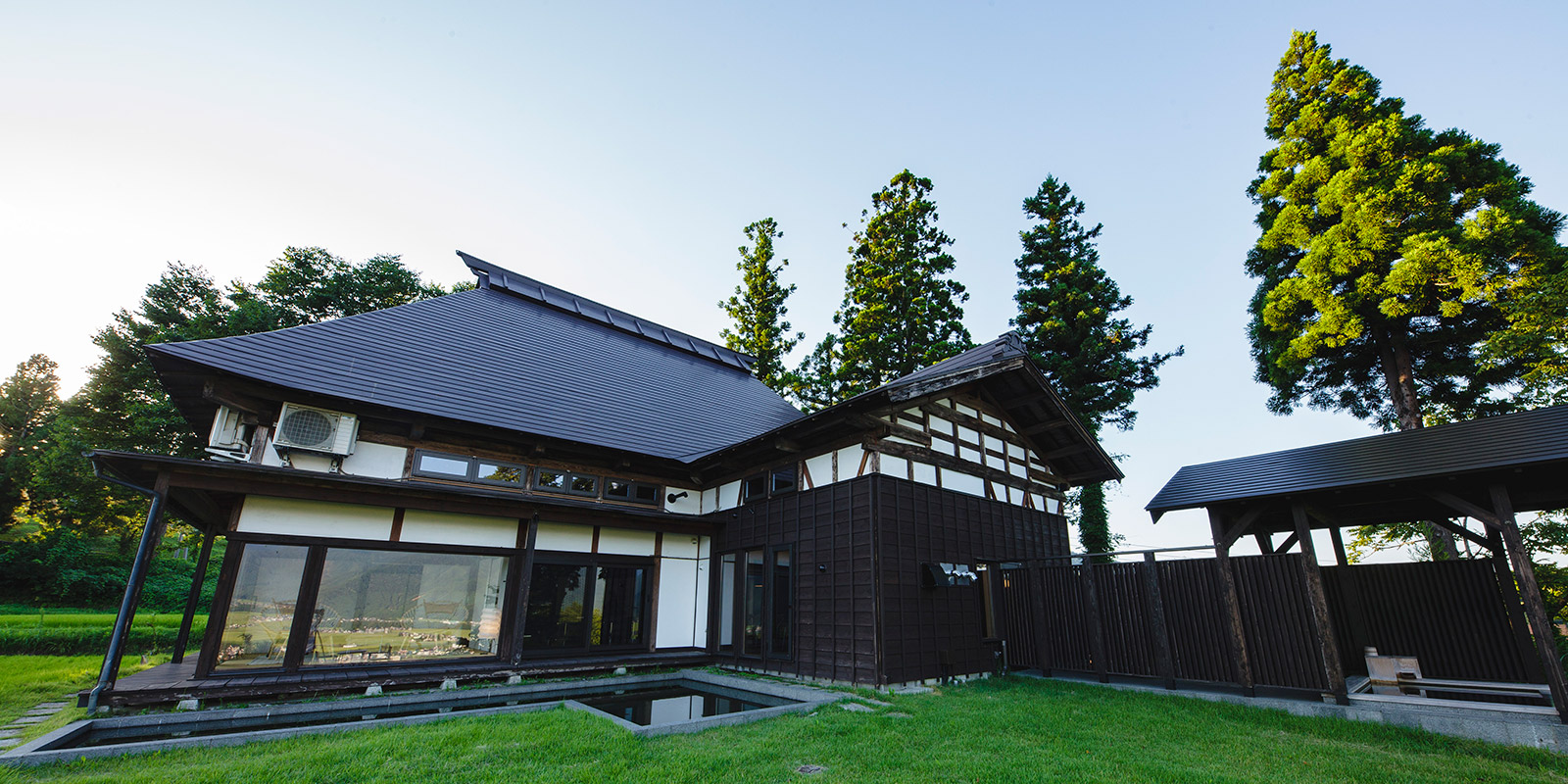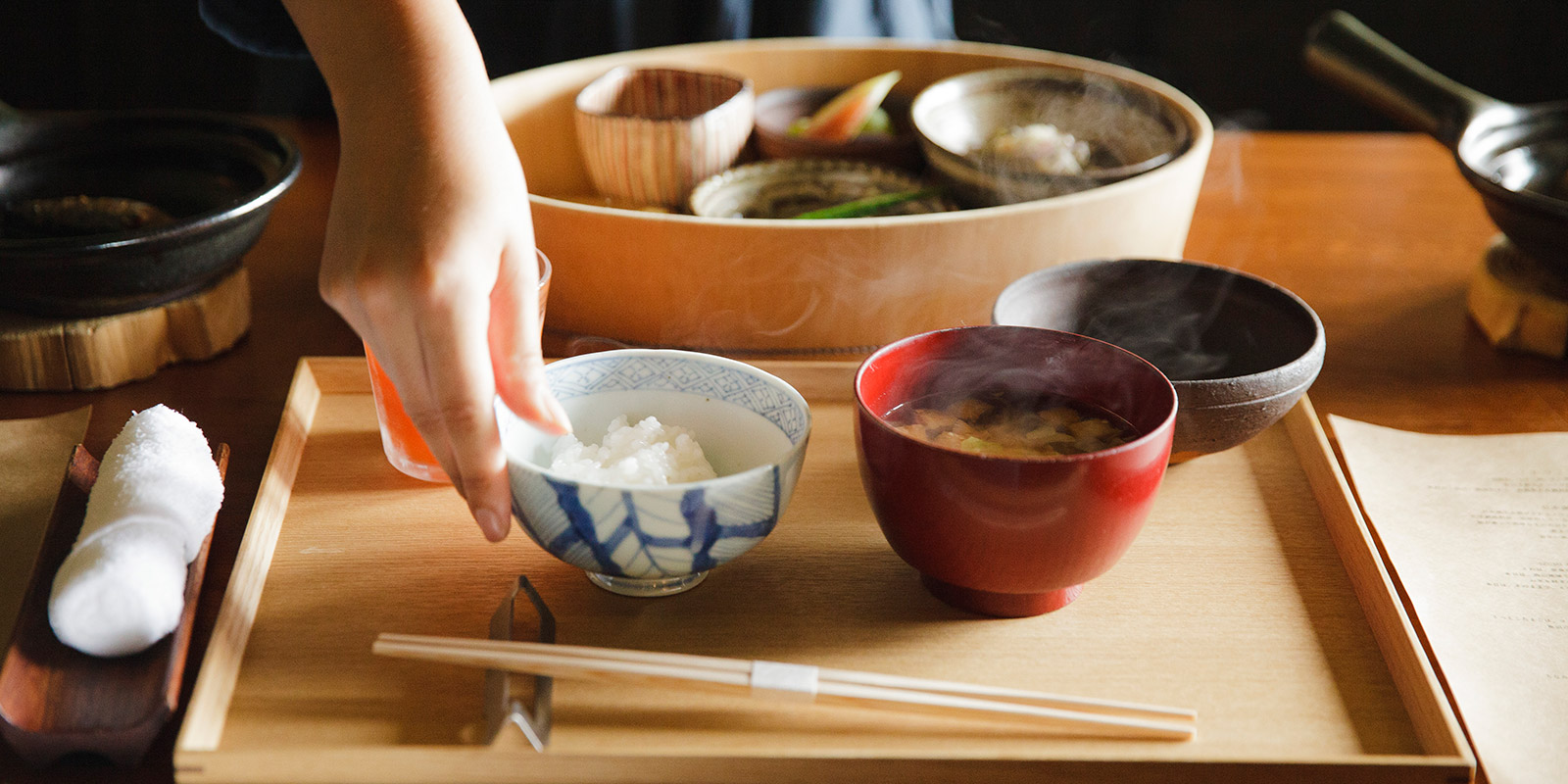A clean break
Toru Iwasa, creative director and CEO of sustainable tourism company Jiyujin talks to Risa Shoji about how the preservation of local environments, food and traditions can encourage visitors to choose a greener and fairer holiday
A two-hour journey from Tokyo by train through a mountainous landscape takes us from Tokyo to Minamiuonuma in Niigata Prefecture, one of Japan’s leading rice-growing regions. The Koshihikari cultivar produced here is often cited as Japan’s tastiest rice and its production certainly makes for beautiful views. Lush paddy fields line the Uono River, which flows through the plains, and clusters of golden rice ears are swaying in the cool late-summer breeze. Overlooking the scenery is the hilltop Satoyama Jujo The House, a modern ryokan inn set inside a traditional Japanese country home.
“Here you have beautiful nature changing throughout the four seasons, always right in front of you”
“It’ll only be a little longer until all the rice ears in the paddies change color and the entire area turns golden,” says Toru Iwasa proudly. “This is a snowy landscape in winter, in spring the paddies look like reflecting mirrors. Here you have beautiful nature changing throughout the four seasons, always right in front of you. Isn’t it precious?”
 The view from Satoyama Jujo The House l Keisuke Tanigawa
The view from Satoyama Jujo The House l Keisuke Tanigawa
Custom made
Iwasa is the CEO of Jiyujin, an ambitious sustainable tourism company which publishes a food- and travel-themed publication (also called Jiyujin) and runs several beautiful hotels across the country. Satoyama Jujo The House is an extension of the company’s first property in Minamiuonuma, an area very special to Iwasa. Having found success as a magazine editor in Tokyo, Iwasa set out in search of “true fulfillment”—a journey that brought him to Minamiuonuma in 2004. Here he discovered the joys of the traditional Japanese lifestyle and culinary culture. Determined to share what he’d found with others, he opened the Satoyama Jujo hot-spring inn in the area in 2014, adding “The House” in 2021.
Satoyama Jujo revives a 150-year-old building, fully renovating it while retaining as much of its original charm as possible. The meals prepared in its kitchen don’t use imported ingredients, being made instead from the finest Koshihikari rice and locally grown vegetables and wild plants. The rotenburo open-air baths offer guests views of the picturesque fields which provide the delicious fare on their plates.
The rotenburo open-air baths offer guests views of the picturesque fields which provide the delicious fare on their plates
 Satoyama Jujo The House l Keisuke Tanigawa
Satoyama Jujo The House l Keisuke Tanigawa
Incorporating what its founder considers Minamiuonuma’s “unique value,” Satoyama Jujo quickly found a receptive audience and now enjoys a constant stream of guests year round. Iwasa’s approach, which combines economic viability with protecting local life and the environment, is a hallmark of sustainable tourism—yet he was practising it long before the term became fashionable in Japan. When asked how he was able to pioneer and utilize the concept in building Satoyama Jujo, Iwasa ponders the question for a moment before choosing his words carefully. “It’s hard to point at any one thing, but maybe it has to do with the way I make sure to respect each place’s circumstances and history,” he says. “For example, Minamiuonuma gets some of the heaviest snowfall in Japan—up to three meters. But it’s precisely because of this harsh environment that a unique food culture, one that makes full use of fermentation and preservation techniques, has developed here. The fine pillars, beams, and timber framings of the old houses in this area are beautiful yet functional—a design unique to snowy regions, created to withstand the weight of the snow. History and the traditional culture fostered over centuries have value that can’t be measured in numbers. I want my inn to express and convey this value.”
“To establish sustainable tourism, it’s essential to look at convenience and comfort”
Careful study of the history and culture of a region has led to Iwasa discovering unique traditions and practices that have been handed down from generation to generation. But Iwasa emphasizes that simply protecting and passing on these “treasures” will not lead to business success. “To turn local treasures into resources and establish sustainable tourism, it’s essential to look at convenience and comfort,” he says thoughtfully. “No matter how often you tell people that ‘these vegetables can only be picked here,’ if the food doesn’t taste good, guests won’t be happy. If an old house remains in its original state, it’s likely to be cold and inconvenient, making it impossible to provide a great accommodation experience. It’s important to be creative and produce something new based on a deep understanding of history and culture.”
Spurred on by his success in Minamiuonuma, Iwasa is now involved in regional revitalization projects across Japan, all focused on the “rediscovery of value.” His innovative and creative restoration methods are on full display at the acclaimed Koo Otsu Hyakucho in Otsu, Shiga Prefecture, which is the first hotel in Japan to occupy a restored machiya townhouse in a traditional shopping arcade, and at Hakone Honbako, a former corporate recreation facility turned literary hotel in Hakone, south of Tokyo.
 Keisuke Tanigawa
Keisuke Tanigawa
Saving grace
The House is the first facility in a series of new projects Iwasa is planning in the Minamiuonuma area. “There are houses here that are over 100 years old,” he says, “but many of them are being demolished one after another because they are too cold or inconvenient to use. In order to preserve these precious structures as important local resources for future generations, we plan to renovate them one by one and turn them into inns.”
Ever since launching Jiyujin magazine, Iwasa has concentrated on highlighting the value of rural areas and on conveying what makes them great. His consistent approach has influenced many others in the tourism industry, which is looking forward to a post-pandemic rebound in international travel to Japan. But what can the country do to stand out in the global market for sustainable tourism?
“The traditions handed down from generation to generation locally must be preserved for future generations”
“Food obviously has the greatest potential [to attract tourists], and every region has its own food culture,” he says, expanding on rice as an example. “Rice is not only our staple grain; it was traditionally what the economy revolved around. Taxes were paid in rice, and the value of land was expressed in koku—the amount of rice needed to feed one person for a year. Rice bran, the byproduct of polishing rice, has contributed to our culture of fermented foods, such as nukazuke (pickles made in brine and fermented rice bran). There are countless other foods made from rice, such as rice vinegar, sake, mochi (sticky rice cakes) and senbei (rice crackers). Still, most Japanese people aren’t consciously aware of the history and culture associated with rice. Japanese society developed alongside rice cultivation, but rice is so familiar to us that we don’t realize its value.”
Not that food is the only way to a budding sustainable tourist’s heart. “Of course, a region that’s strong in forestry could focus on housing, or a place that’s known for its textiles or dyed goods could consider new initiatives in the clothing sector,” Iwasa continues before stressing that it all comes back to sustainability. “The traditions handed down from generation to generation locally must be preserved for future generations,” he says. “I believe that over time, tourism can cultivate local pride and lead to the sustainable development of a region. What’s key is that each and every person involved in sustainable tourism locally shares that perspective and plays their part.”